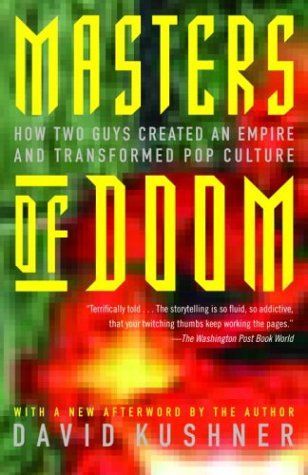
Masters of Doom How Two Guys Created an Empire and Transformed Pop Culture
Presents a dual biography of John Carmack and John Romero, the creators of the video games Doom and Quake, assessing the impact of their creation on American pop culture and revealing how their success eventually destroyed their relationship.
Reviews
Patrick Book@patrickb
Lovro Oreskovic@lovro
Tobias V. Langhoff@tvil
Daniel Toke Hansen@danieltoke
Gavin@gl
Bouke van der Bijl@bouk
Kesar Varma@kcv4
Todd Luallen@tluallen
Kait Long@kaitlong
Radimir Bitsov@radibit
Barry Hess@bjhess
Adam@adam
James Bedford@james
Gabriel Naslaniec@gabrielnaslaniec
Carter Rabasa@crtr0
James King@jamesking
Ricardo Parro@ricardoparro
Eduardo Marques Correa@eduardo
John Manoogian III@jm3
Witek Bobrowski@witek
Josh Kuiros@joshkuiros
Akhil Ravidas@akhil
Jayme Cochrane@jamesco
Martin Heuer@maddin
Highlights
Sven Schmidt@sven
Sven Schmidt@sven
Page 292